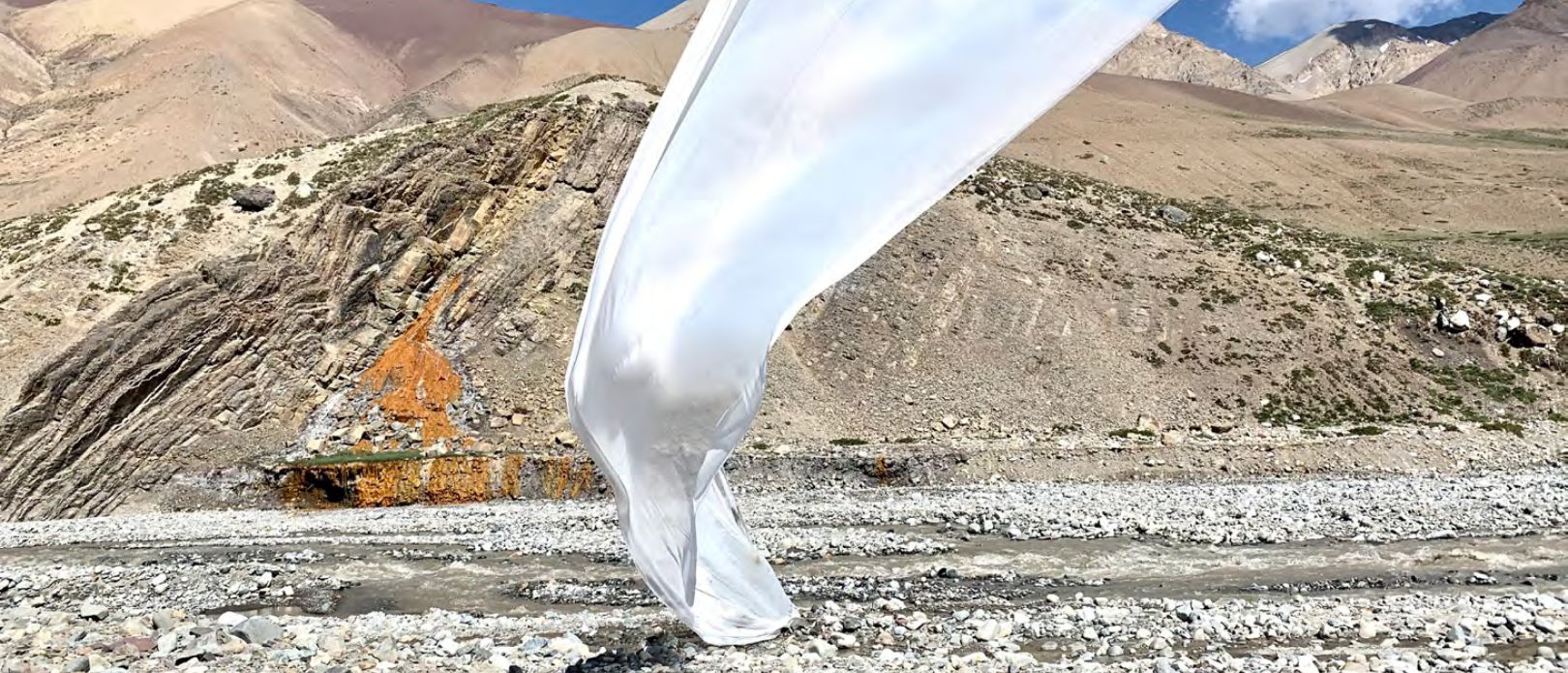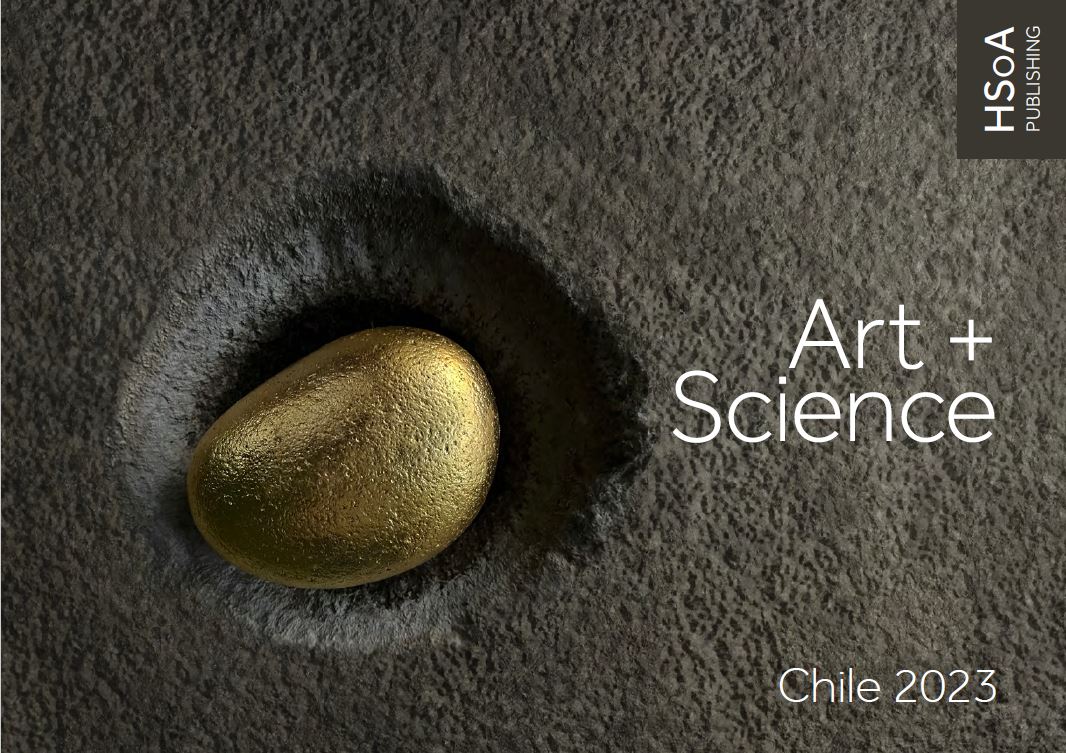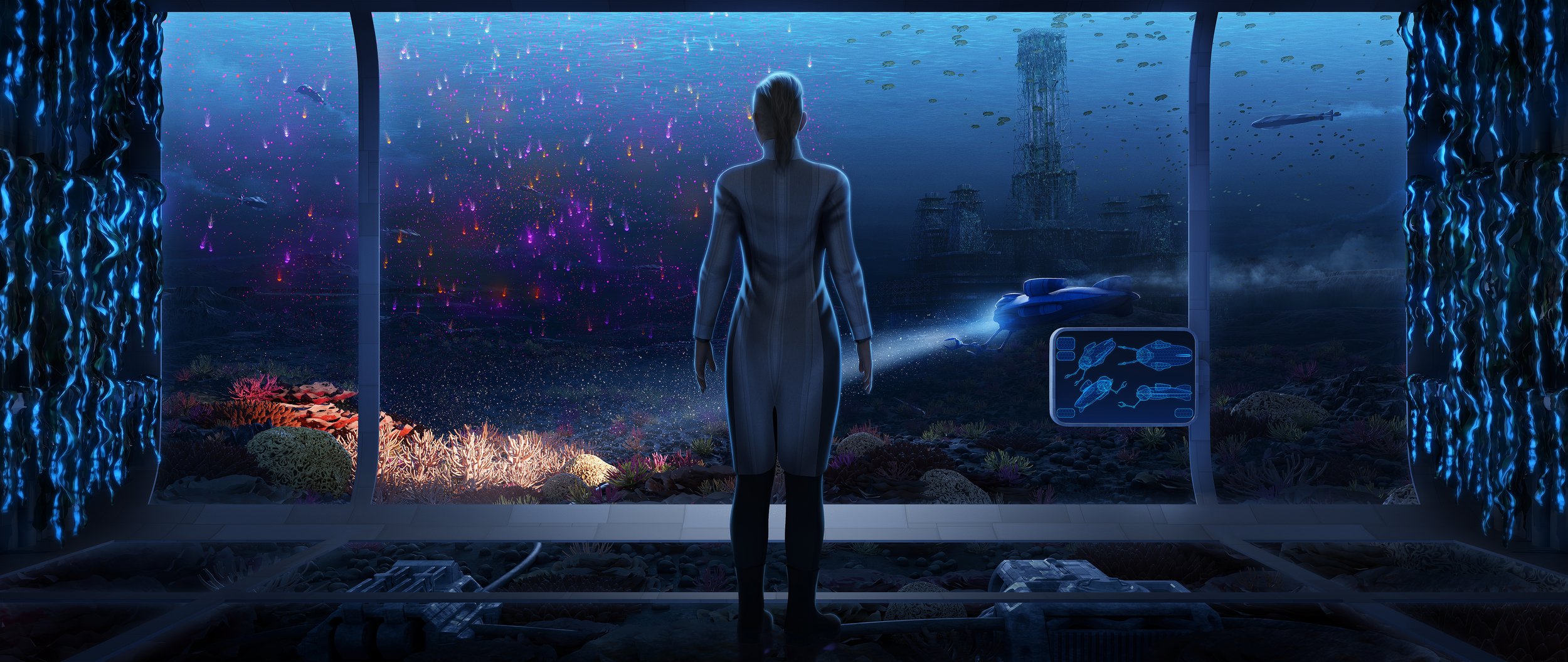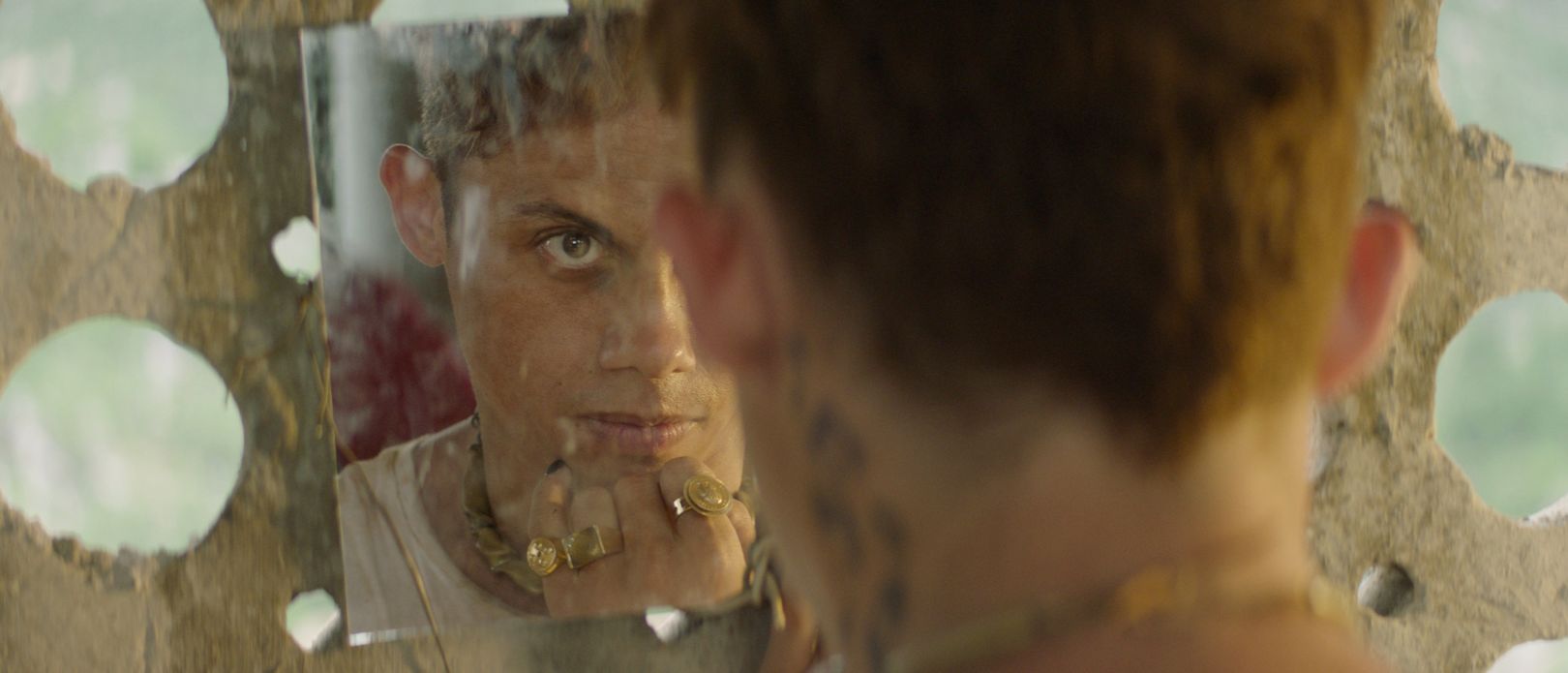Art and science
The art and science of biosphere stewardship

Bolts of cloth flying in the wind. Part of Patrik Bermingham's "Voyage of Discovery".
New publication summarizes experiences from a unique art-science collaboration and explores the many ways that artists and scientists interact with the natural world
- New publication summarizes experiences collected during a workshop in the Chilean Andes with a group of sculptors, painters, mathematicians, and ecologists
- It includes text and photography from the Andes, the Tierra del Fuego archipelago, and the island Stora Karlsö in the Baltic Sea.
- The complementary ways that artists and scientists relate to nature are explored, and how this can stimulate new ways to reconnect with the biosphere
Artists and scientists relate to nature in complementary ways. Perhaps a combination of these ways can support reflection on the relationships between humans and other species and stimulate new ways to reconnect with the biosphere? This is the central question of a new catalogue “Art + Science Chile 2023,” which is the product of collaborations between scientists, between artists, and between artists and scientists.
Centre researcher Henrik Österblom has been deeply involved in the collaborations and also part of the editing committee behind the new publication.
“The ambition of this collaborative work is to inspire artists, scientists, their institutions, and funders, to explore the spaces between science and art,” Österblom explains.
Exploring ways to interact with the world
The catalogue summarizes experiences collected during a workshop in the Chilean Andes, where a group of sculptors, painters, mathematicians, and ecologists met to explore the many ways that artists and scientists interact with the natural world.
The ambition of this collaborative work is to inspire artists, scientists, their institutions, and funders, to explore the spaces between science and art.
Centre researcher Henrik Österblom
As such, “Art + Science Chile 2023” attempts to both explore the intersection between art and science, and summarize their common and differing experiences of wind, water, mountains, and the beauty of nature. The catalogue includes text and photography from the Chilean Andes, the Tierra del Fuego archipelago at the southernmost tip of South America, and the Swedish island Stora Karlsö in the Baltic Sea. It demonstrates what can happen when artists and scientists combine their skills for individual and collaborative reflections, and when they develop art from such shared experiences. The resulting sketches, poetry, and sculptures are featured in the catalogue and paint new pictures of the complex intertwined systems of humans and nature that we are all part of.
'Try not to think too much'
“We [scientists] understand small parts of the world increasingly well, but have lost track of the whole. How can we capture the essence of complex systems if it isn’t through art,” writes the Dutch ecologist Marten Scheffer in the catalogue.
The workshop in the Andes was organized by the artist couple Angela Leible and Francisco Gazitua, and designed to search for novelty, and to interact without a set agenda.
Henrik Österblom describes the experience as different but truly invigorating: “There were no specific problems to address and we were not looking for solutions. When arriving to Chile, the instructions were: ‘Try not to think too much. In fact, don’t think at all’,” he says.
The art-science collaboration took off at the South American Institute for Resilience and Sustainability Studies (SARAS) in Uruguay, where several of the participants met for the first time in 2013. The catalogue was produced in partnership with Hampstead School of Art in London and by the editing committee, which apart from Österblom also included Francisco Gazitua (sculptor), Angela Leible (painter), and Isabel H Langtry (sculptor and Principal at the Hamstead School of Art).
Download the catalogue » Pdf, 8.8 MB.
Pdf, 8.8 MB.
The collaboration between scientists and artists has also resulted in a research article published in the journal Ecology & Society. You can read "To split a stone" here »









